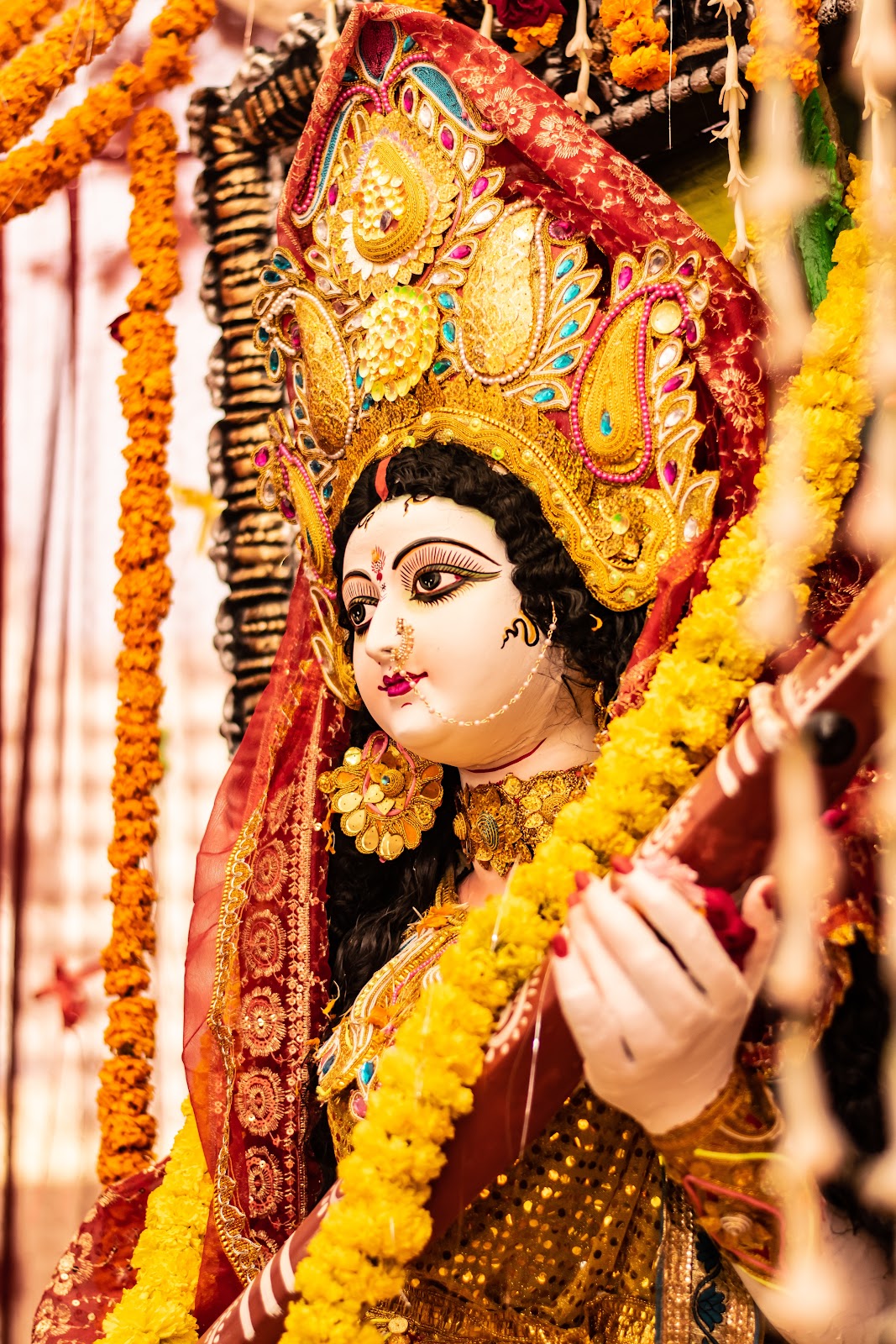Featured
- Get link
- X
- Other Apps
Durga Puja:The Significance of the Immersion Ceremony in Durga Puja.
Durga Puja is one of the most important Hindu festivals celebrated in India, particularly in the eastern region of the country. It is a ten-day festival that celebrates the victory of the goddess Durga over the demon Mahishasura. In this blog post, we will explore the significance of Durga Puja and the practices associated with it.
Durga Puja is celebrated in the Hindu month of Ashwin, which falls between September and October. It is a time of great joy and celebration, as people come together to worship the goddess Durga, who is considered to be the embodiment of divine feminine energy.
The festival begins with the installation of the idol of the goddess Durga in homes and pandals (temporary structures) across the country. The idol is beautifully decorated with flowers and ornaments, and it is worshipped for the next ten days. During this time, people offer prayers, sing devotional songs, and perform aarti (lighting lamps) to honor the goddess.
On the fifth day of the festival, which is known as Mahalaya, people wake up early in the morning to offer prayers to their ancestors. It is believed that on this day, the goddess Durga descends to earth from her heavenly abode, and the ritual is performed to welcome her.
The main celebration of Durga Puja takes place on the sixth to the ninth day, which is also known as Saptami, Ashtami, Navami, and Dashami respectively. During these days, people visit pandals to offer prayers to the goddess and to admire the beautiful decorations and lighting. The atmosphere is festive, with people dressed in traditional clothes and enjoying street food and cultural programs.
On the tenth day, which is known as Vijayadashami or Dussehra, the idol of the goddess Durga is taken out in a procession and immersed in a nearby river or lake. This symbolizes the return of the goddess to her heavenly abode after her ten-day sojourn on earth. The day is also marked by the traditional exchange of sweets and gifts among family and friends.
Durga Puja is a festival that is deeply rooted in the culture and traditions of India, particularly in the eastern states of West Bengal, Bihar, and Odisha. People have to come together and celebrate their shared history, mythology, and values.
One of the most striking features of Durga Puja is the elaborate pandals that are set up across the country. These temporary structures are often built with bamboo, cloth, and other materials, and they are decorated with lights, flowers, and artwork. The pandals often depict scenes from Hindu mythology or current social issues, and they are a major attraction for people of all ages.
Another important aspect of Durga Puja is the traditional food that is prepared and shared among family and friends. During the festival, people indulge in delicious sweets, snacks, and meals, such as luchi-aloor dum (deep-fried bread with spicy potato curry), Sandesh (a type of sweet made with cottage cheese), and rasgulla (a syrupy dessert).
The festival also has a significant economic impact, as it provides a boost to local businesses and artisans. From pandal builders to food vendors to clothing retailers, Durga Puja provides employment opportunities and generates revenue for many small businesses.
Durga Puja is not just a religious festival; it is also a cultural celebration that reflects the rich diversity and heritage of India. It is a time for people to come together and celebrate their shared history and values, and seek the blessings of the goddess for a better future.
In conclusion, Durga Puja is a joyous festival that celebrates the victory of good over evil. It is a time to honor the goddess Durga and to seek her blessings for health, happiness, and prosperity. The festival is marked by elaborate decorations, cultural programs, and traditional rituals, and it is a time for people to come together and celebrate their shared heritage and faith.
- Get link
- X
- Other Apps





Comments
Post a Comment